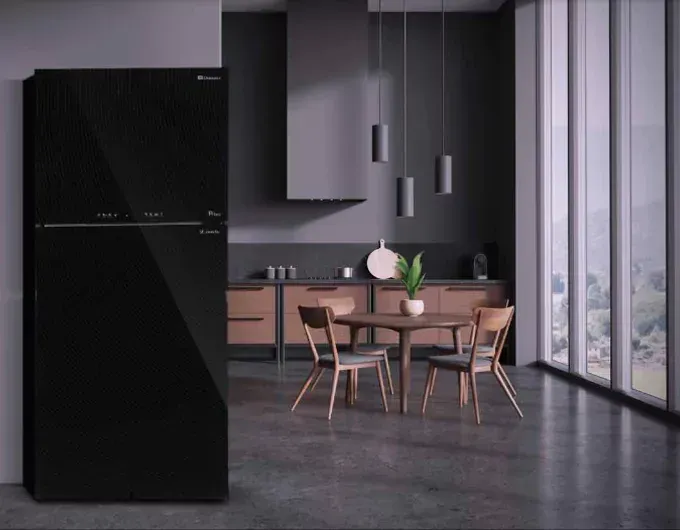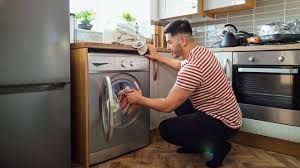Essential LG Dryer Repair FAQs
Q: Why is my LG dryer not heating?
A: If your LG dryer is not heating, there are several potential causes. Common issues include a tripped circuit breaker, a clogged lint filter or vent, or a faulty heating element. First, check to make sure the dryer is properly plugged in and that the circuit breaker hasn't tripped. Next, clean the lint filter and ensure the vent is clear of obstructions. If the dryer still doesn’t heat, the problem may lie with the heating element, thermal fuse, or thermostat, which might require professional repair or replacement. It's advisable to consult your dryer’s manual for troubleshooting tips or contact a certified technician for a more thorough diagnosis.
Q: How do I reset my LG dryer?
A: To reset your LG dryer, you typically need to unplug the dryer from the electrical outlet and wait for about 10 minutes. This allows the internal components to reset. After waiting, plug the dryer back in and check if the problem persists. Some models might also have a reset button on the control panel or require you to press a specific sequence of buttons to reset the appliance. Refer to your user manual for model-specific instructions. If the dryer continues to malfunction, it may be necessary to contact LG customer support or a professional technician for further assistance.
Q: What does the d80 error code mean on an LG dryer?
A: The d80 error code on an LG dryer indicates an 80% air blockage in the exhaust duct, which means there is significant lint buildup or an obstruction that is preventing proper airflow. To resolve this issue, check and clean the lint filter thoroughly. Then, inspect the dryer vent hose and the duct leading outside to ensure they are free from lint or any blockages. If the error persists after cleaning, you may need to use a dryer vent cleaning kit or hire a professional to clean the vent system. Regular maintenance of the vent system is crucial to avoid such issues and ensure efficient dryer operation.
Q: Why is my LG dryer making a squeaking noise?
A: A squeaking noise in an LG dryer often indicates that there are worn or damaged parts that need attention. Common culprits include the drum rollers, idler pulley, or drum bearings. Over time, these components can wear out, leading to a squeaking or squealing sound. To address this issue, you will need to disassemble the dryer to inspect and replace the faulty parts. This can be a complex task, so if you’re not comfortable doing it yourself, it's best to contact a professional appliance repair technician who can accurately diagnose and fix the problem.
Q: How can I fix the flow sense error on my LG dryer?
A: The flow sense error on an LG dryer indicates that there is a restriction in the venting system, which can lead to longer drying times and reduced efficiency. To fix this error, start by cleaning the lint filter thoroughly. Next, check the vent hose and ductwork for any blockages or kinks, and ensure they are properly connected and unobstructed. If the ductwork is excessively long or has multiple bends, it might be restricting airflow, in which case you may need to reconfigure the venting system. Regularly cleaning the vent system can prevent this error and improve your dryer’s performance. If the error persists, consider contacting a professional to inspect and clean the entire venting system.
Q: Why is my LG dryer taking too long to dry clothes?
A: If your LG dryer is taking too long to dry clothes, the most common causes are a clogged lint filter, obstructed vent hose, or restricted airflow. Start by cleaning the lint filter after every load and ensure the vent hose is free of blockages and properly connected. Check the external vent for any obstructions, such as lint buildup or debris, that might be restricting airflow. Additionally, overloading the dryer can lead to longer drying times, so ensure you’re not putting too many clothes in at once. If these steps don’t resolve the issue, it might be a problem with the heating element, thermostat, or sensors, which would require professional repair.
Q: How do I replace the heating element in my LG dryer?
A: Replacing the heating element in an LG dryer involves several steps and should be done with caution. First, unplug the dryer and remove the back panel to access the heating element. The heating element is usually located in a metal housing. Disconnect the wires connected to the heating element and remove any mounting screws. Replace the old heating element with a new one, reattach the wires, and secure it with the mounting screws. Reassemble the dryer and plug it back in to test if it heats properly. Since this process can be complex, refer to your user manual for specific instructions or consider hiring a professional technician to ensure the replacement is done correctly and safely.
Q: Why is my LG dryer showing a filter error message?
A: An LG dryer showing a filter error message typically indicates that the lint filter needs cleaning. Even if the filter looks clean, remove it and wash it with warm, soapy water to remove any fine lint or fabric softener residue that might be clogging the mesh. Additionally, check the filter housing for any lint buildup and clean it thoroughly. Once the filter and housing are clean, reinstall the filter and try running the dryer again. Regular maintenance of the lint filter is essential for efficient dryer performance and to prevent potential fire hazards.
Q: Can I use my LG dryer without the vent hose?
A: Using your LG dryer without the vent hose is not recommended as it can lead to several issues. Without proper ventilation, moisture and lint will accumulate in the laundry area, increasing the risk of mold growth and poor indoor air quality. Additionally, the dryer will operate less efficiently, leading to longer drying times and higher energy consumption. The vent hose is essential for directing hot, moist air out of your home, ensuring the dryer operates safely and effectively. Always ensure your dryer is properly vented according to the manufacturer’s instructions to avoid potential hazards and maintain optimal performance.
Q: How often should I clean my LG dryer vent?
A: It's recommended to clean your LG dryer vent at least once a year to ensure optimal performance and safety. However, if you notice that your dryer is taking longer to dry clothes, the vent might need to be cleaned more frequently. Regular cleaning helps prevent lint buildup, which can reduce airflow, decrease dryer efficiency, and increase the risk of fire. In addition to annual cleaning, always clean the lint filter after every load to minimize lint accumulation in the vent system. For households with heavy dryer usage, consider cleaning the vent every six months to maintain optimal performance.




